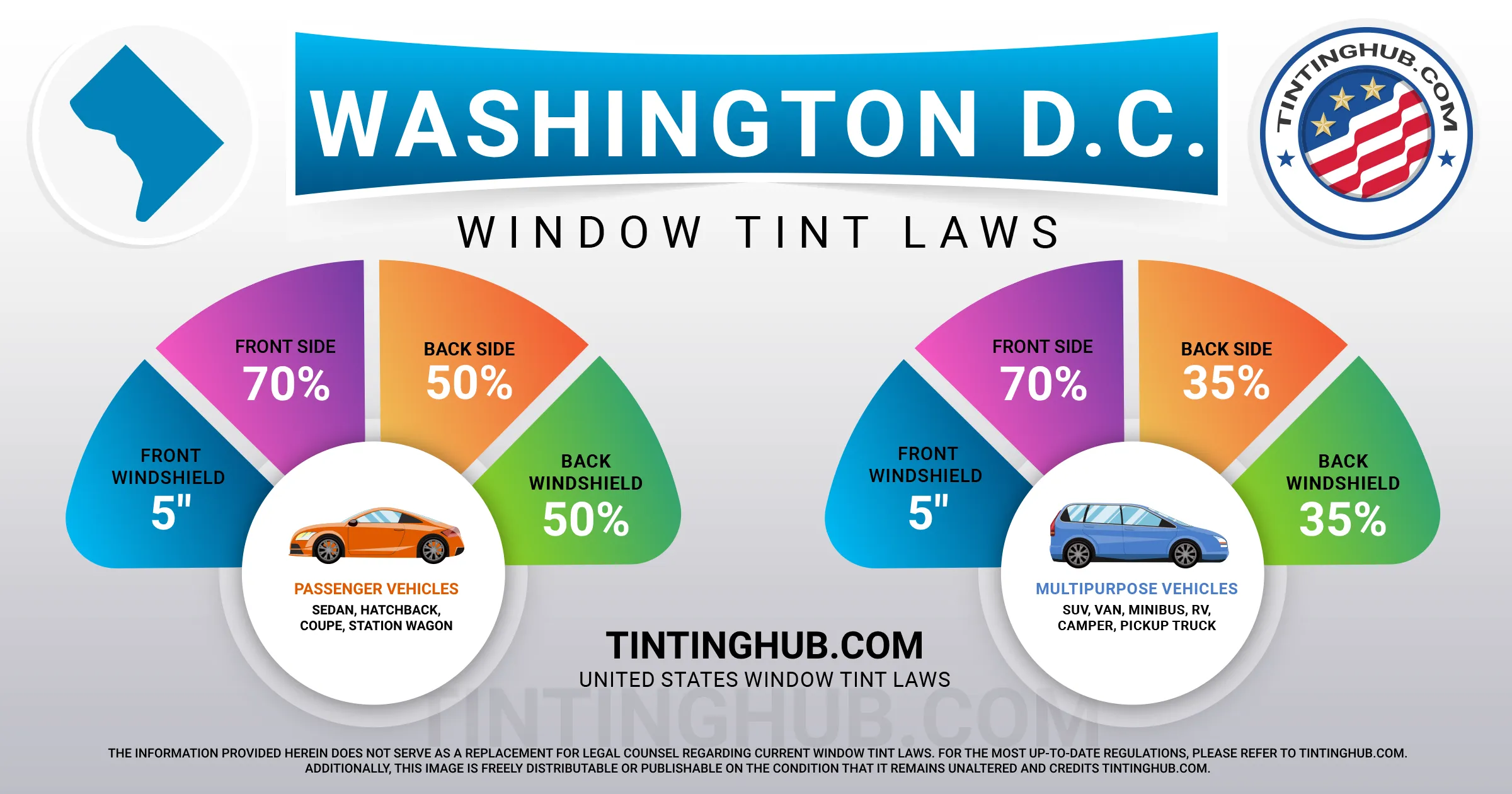Washington D.C. Window Tint Laws (Last Update 2024)

Car window tinting laws in the District of Columbia were established back in 1994. To ensure you’re in full compliance, we’ve compiled comprehensive information about Washington D.C.’s car window tint regulations, including permissible tint darkness, reflectivity, and additional rules that apply to both sedans and SUVs or vans.

Window Tint Darkness Regulations
In Washington D.C., the degree of visible light allowed through your car windows is referred to as VLT, or Visible Light Transmission. These regulations vary for sedan cars and SUVs or vans.
Sedans Tint Darkness
- Windshield: Non-reflective tint is allowed along the top of the windshield, extending above the manufacturer’s AS-1 line or the top 5 inches.
- Front Side Windows: Must allow more than 70% of light to pass through.
- Back Side Windows: Must permit more than 50% of light to enter.
- Rear Window: Must allow more than 50% of light to penetrate.
SUVs and Vans Tint Darkness
- Windshield: Non-reflective tint is permitted along the top of the windshield, above the manufacturer’s AS-1 line or the top 5 inches.
- Front Side Windows: Must enable more than 70% of light to pass through.
- Back Side Windows: Must allow more than 35% of light inside.
- Rear Window: Must permit more than 35% of light to enter.
Window Tint Reflection Specifications
Window tint can reflect incoming light, which not only reduces glare but also minimizes heat. Washington D.C. window tint regulations also address the level of reflection allowed when using tint.
Sedans Tint Reflection
- Front Side Windows: There are no specific references to reflection regulations in current laws.
- Back Side Windows: Similarly, no specific reflection regulations are mentioned in current laws.
SUVs and Vans Tint Reflection
- Front Side Windows: Like sedans, there are no references to reflection regulations in current laws.
- Back Side Windows: Current laws also do not specify reflection regulations for SUVs and vans.
Additional Washington D.C. Window Tinting Laws and Regulations
Beyond tint darkness and reflection regulations, Washington D.C. has several other essential laws, rules, and regulations pertaining to window tinting:
- Side Mirrors: No restrictions are imposed on side mirrors.
- Restricted Colors: No explicit prohibitions on tint colors exist.
- Certificates: There’s no requirement for tint certificates in the District of Columbia.
- Stickers: No stickers are mandated to identify legal tinting.
- Medical Exceptions: Medical waivers are allowed in Washington D.C. For further information, consult your local DMV.
- Penalties: Violations may result in a $50 citation, with potential fines of up to $1,000 if non-compliance persists beyond 5 days.
Please note that Washington D.C.’s tinting laws and regulations may be subject to varying interpretations in different counties or places of residence. Therefore, it’s advisable to cross-verify this information with your local DMV or law enforcement authorities.
Our data concerning window tint laws in Washington D.C. is up to date as of 2023. If you find any inaccuracies or outdated information, please don’t hesitate to contact us for corrections.
We take pride in being a trusted industry leader, providing precise and current information on window tint laws. Your compliance with these regulations not only ensures your safety but also helps protect your investment.